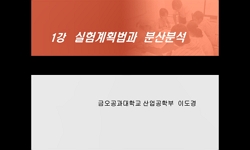Although well-designed randomized controlled trials (RCTs) are the most scientifically rigorous method for testing a hypothesis and have held the uppermost position in the hierarchy of evidence- based medicine as level I evidence, RCTs can be impracti...
http://chineseinput.net/에서 pinyin(병음)방식으로 중국어를 변환할 수 있습니다.
변환된 중국어를 복사하여 사용하시면 됩니다.
- 中文 을 입력하시려면 zhongwen을 입력하시고 space를누르시면됩니다.
- 北京 을 입력하시려면 beijing을 입력하시고 space를 누르시면 됩니다.
관찰 연구에서 선택 삐뚤림과 교란 변수를 최소화하기 위한 방법에 대한 고찰 = A Review of Methods for Minimizing Selection Biases and Confounders in Observational Studies
한글로보기https://www.riss.kr/link?id=A60036196
- 저자
- 발행기관
- 학술지명
- 권호사항
-
발행연도
2012
-
작성언어
-
- 주제어
-
KDC
500
-
등재정보
구)KCI등재(통합)
-
자료형태
학술저널
- 발행기관 URL
-
수록면
8-13(6쪽)
- 제공처
-
0
상세조회 -
0
다운로드
부가정보
다국어 초록 (Multilingual Abstract)
Although well-designed randomized controlled trials (RCTs) are the most scientifically rigorous method for testing a hypothesis and have held the uppermost position in the hierarchy of evidence- based medicine as level I evidence, RCTs can be impractical or unethical in clinical settings. Observational studies are the best available alternative when RCTs are unavailable. Well-designed observational studies in the fields of both clinical and epidemiological research have been shown to provide similar results as those of RCTs with level II or III evidence; however, there are major methological limitations of observational studies including biases and confounders. To overcome these limitations, it is very important to consider or avoid possible factors (biases and confounders) which can interfere with adequate interpretation of results. This article provides an overview of selection biases and confounders as well as stratigies to minimize biases and confounders in the design and analytic phase of an observational study. Understanding of selection biases and confounders in observational studies and methods for controlling biases and confounders will assist investigators in conducting well-designed observational studies. (Korean J Asthma Allergy Clin Immunol 2012;32:8-13)
동일학술지(권/호) 다른 논문
-
Churg-Strauss 증후군 환자에서 저용량 경구 Cyclophosphamide 사용 중 발생한 출혈성 방광염
- 대한천식알레르기학회
- 박은정 ( Eun Jung Park )
- 2012
- 구)KCI등재(통합)
-
- 대한천식알레르기학회
- 김지영 ( Ji Young Kim )
- 2012
- 구)KCI등재(통합)
-
아스피린 탈감작으로 호전된 아스피린 과민증을 동반한 난치성 만성 두드러기 2예
- 대한천식알레르기학회
- 오민수 ( Min Su Oh )
- 2012
- 구)KCI등재(통합)
-
- 대한천식알레르기학회
- 조완익 ( Wan Ik Cho )
- 2012
- 구)KCI등재(통합)




 KCI
KCI KISS
KISS




